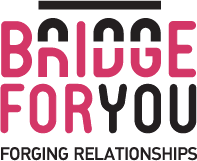I met Monika Dauterive for the first time after she had given a presentation about life at the company where she was working: she laughed a lot and spoke very amicably about everything in terms of colleagues and employees. According to the headline on her Linkedin profile, she is a people person; she is only happy if she is surrounded by inspiring and motivated people, whom she can share her knowledge with. Her professional successes, as well as setbacks, have always been influenced by the people she was collaborating with.
Since she is leaving her HR Management role at Ulbrichts this summer and returning to her former employer, Runtastic, I thought, it would be very useful to gather some insights about Monika’s work life. In this interview, she talks us through the cultures of the companies she has been working for, and about how they developed their employer value proposition (EVP) and created employee experience at the companies.
BFY: From an employee perspective what was your worst and best experience in your career?
MD: I think the worst habit I have come across in my career is hopelessness and cynicism among colleagues. For me, it is especially hard to understand highly-skilled peers who cannot stop complaining about their current state, without putting any effort into changing it. I truly live by the mindset “love it, change it or leave it”.
Probably one of the most wonderful experiences was Runtastic’s COO hugging me good-bye on my last working day, telling me “this is not a good-bye, this is a see you later.“ I am truly happy that he was right.

BFY: You are Ulbrichts’ HR Manager until July 2019. By Fall 2019 you will rejoin Runtastic as People & Culture Manager. How would you describe the culture at Runtastic? How is it different compared to Ulbrichts?
 MD: Even though the companies have quite a few similarities (size, turnover, the involvement of owners/founders, fast-paced and highly successful), the cultures could not be more different. While at Runtastic management seems to be truly open for change, at Ulbrichts they rather rely on existing structures and previous success factors. While I believe that both approaches are valid (I mean, who am I to judge?), the C-Levels’ attitude strongly reflects on the employees and their openness towards change.
MD: Even though the companies have quite a few similarities (size, turnover, the involvement of owners/founders, fast-paced and highly successful), the cultures could not be more different. While at Runtastic management seems to be truly open for change, at Ulbrichts they rather rely on existing structures and previous success factors. While I believe that both approaches are valid (I mean, who am I to judge?), the C-Levels’ attitude strongly reflects on the employees and their openness towards change.
BFY: You left Runtastic earlier but you will return this year. What changed so that you join the team again and what are your expectations now professionally?
MD: I left because I was tempted by a managerial role. However, I soon realized that I miss the international and digital company culture and the bubble full of liberal people with open minds. While I appreciated Ulbrichts‘ diversity in regards of age and educational level among the employees, I simply fit better in a setting like we have at Runtastic. As I am deeply humbled by my new role, I expect to learn a lot about internal communication and employee engagement.
BFY: How did you develop your EVP?
MD: At Runtastic, we held a 2-day-workshop, including team members from Marketing, Design, Organizational Development and HR. We based our findings on internal surveys and an external audit (Great Place to Work®) as well as market research. At Ulbrichts I simply talked to high-performing employees and asked them what they liked about the company, what would attract them and how they would look for jobs.
BFY: How do you communicate your EVP?
 MD: At Ulbrichts we changed our job ads and adapted the careers page on the website, and we would also promote our EVP in our job interviews, as well as at career fairs and local events.
MD: At Ulbrichts we changed our job ads and adapted the careers page on the website, and we would also promote our EVP in our job interviews, as well as at career fairs and local events.
At Runtastic we initiated a campaign throughout the careers page, through social media and a variety of career and technology platforms. For example, on Linkedin we organically doubled our followers from 3,000 to 6,000 within 18 months, simply by posting authentic content from the company and its team.
In general, the wording is consistent, and the claim “Welcome home. Let’s change the world.“ appeared regularly. Over the months and years, we adapted the usage of pictures, to even more authentic, less professional ones, as we had learned that they are way more popular among both employees and candidates.
BFY: Today experiences are everywhere. From Customer Experience to User Experience, everybody is talking about creating the best experiences. What about the experience of your employees at Runtastic?
MD: I believe, both the candidate as well as the employee experiences rock at Runtastic. Every quarter we hold an engagement survey, not only calculating our eNPS (employee Net Promoter Score - edited), but also evaluating major pain points and deriving actions from them. Candidates are treated respectfully, receive fast feedback and are dealt with transparently throughout the process.
BFY:What do you think about theories of attracting talent from different generations? Is there a difference in how you communicate benefits and company culture depending on the fact that your target group belongs to Gen X, Y or Z?
 MD: I am truly not a fan of the generation dogma. For one, I am officially a Gen Y member just like my colleagues 10 years younger than me. We have completely different lifestyles simply based on our family backgrounds, so I think our requirements in a job may differ. In addition, the benefits the company uses to try to catch Gen Y and Z are usually great (flexible working hours, constant feedback, a clear vision, social responsibility) – why would older generations not want these, I wonder?!
MD: I am truly not a fan of the generation dogma. For one, I am officially a Gen Y member just like my colleagues 10 years younger than me. We have completely different lifestyles simply based on our family backgrounds, so I think our requirements in a job may differ. In addition, the benefits the company uses to try to catch Gen Y and Z are usually great (flexible working hours, constant feedback, a clear vision, social responsibility) – why would older generations not want these, I wonder?!
BFY: What are your top 3 tips to employer brand managers?
MD: Authenticity: Don’t promote random stuff you think your target group would like to hear. Be honest, be transparent and also talk about the challenges your company faces. And show real pictures rather than photoshopped stock photos. Make your employees your ambassadors: when people enjoy working at your company and recommend working there, it’s truly a good sign. They will not only find new talent for your business but create a positive authentic image outside as well as inside the company. In order to make sure that your employees are satisfied, regularly measure their satisfaction, for example by using the eNPS (Employee Net Promoter Score) as your main KPI. Don’t confuse Employer Branding with marketing activities. Yes, it is important to become known and therefore emphasize campaigns through your website, career fairs, job ads and social media. However, Employer Branding is more. It’s creating an authentic feel about the company culture from inside out. If you can’t keep what you promise, you will not be successful.






